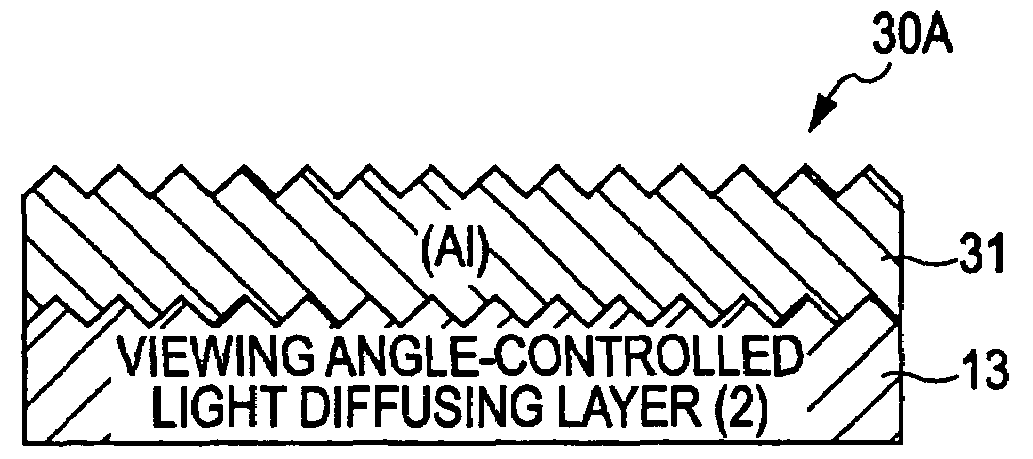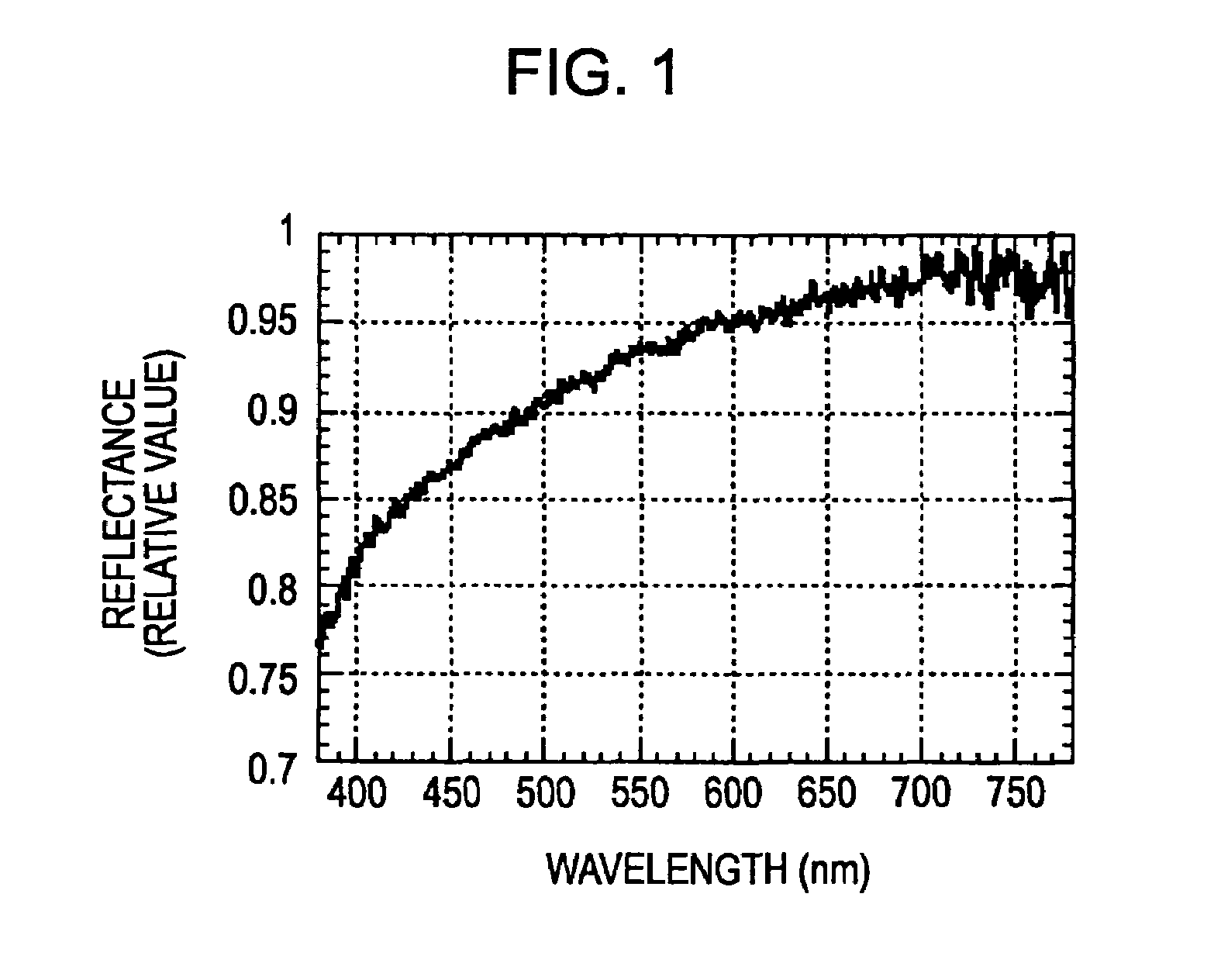Reflective screen
a technology of reflector light and screen, which is applied in the field of reflector light, can solve the problems of deviating the reflected color of projector light, limiting the diffusion angle and screen size, and not yet achieving the fundamental solution, and achieves the effects of low cost, high contrast, and easy formation
- Summary
- Abstract
- Description
- Claims
- Application Information
AI Technical Summary
Benefits of technology
Problems solved by technology
Method used
Image
Examples
example 1
[0210]Examples of the invention will be described.
(1) Reflective Screen Sample
[0211]The reflective screen 10B according to the embodiment of the invention was formed according to the following procedures:
[0212](S11) Al was deposited to a thickness of 50 nm on a PET film (thickness 100 μm) by sputtering to form the light reflecting layer 11.
[0213](S12) The PET film (thickness 100 μm) was uniformly coated with an ultraviolet curable resin, and a mold having irregularity formed by sand blasting was pressed on the resin coating layer. Then, the resin coating layer was cured by ultraviolet irradiation, and the mold was removed to form, on the PET film, a resin film with the irregularity transferred thereon. The resin layer was used as the light diffusing layer 13. The light diffusing layer 13 exhibited the diffusion properties shown in FIG. 3. In other words, the diffusion angles in the A-axis direction and in the B-axis direction were 21° and 36°, respectively, and the half-luminance in...
example 2
[0217]A reflective screen was formed by the same method as in Example 1 except that an acrylic transparent adhesive tape (TD06A manufactured by Tomoegawa Paper Co., Ltd.) was used instead of the light absorbing layer 12.
example 3
[0218]The reflective screen 30C according to one of the embodiments of the invention was formed according to the following procedures:
[0219](S21) A PET film (thickness 100 μm) was uniformly coated with an ultraviolet curable resin, and a mold having irregularity formed by sand blasting was pressed on the resin coating layer. Then, the resin coating layer was cured by ultraviolet irradiation, and the mold was removed to form, on the PET film, a resin film with the irregularity transferred thereon. The resin layer was used as the light diffusing layer 13. The diffusion properties of the light diffusing layer 13 are shown in FIG. 19. In other words, the diffusion angles in the A-axis direction and in the B-axis direction were 36° and 50°, respectively, and the half-luminance incidence angles on one (positive incidence angle side) of the sides and the other side (negative incidence angle side) on the A axis were 20° and 16°, respectively. On the other hand, the half-luminance incidence ...
PUM
 Login to View More
Login to View More Abstract
Description
Claims
Application Information
 Login to View More
Login to View More - R&D
- Intellectual Property
- Life Sciences
- Materials
- Tech Scout
- Unparalleled Data Quality
- Higher Quality Content
- 60% Fewer Hallucinations
Browse by: Latest US Patents, China's latest patents, Technical Efficacy Thesaurus, Application Domain, Technology Topic, Popular Technical Reports.
© 2025 PatSnap. All rights reserved.Legal|Privacy policy|Modern Slavery Act Transparency Statement|Sitemap|About US| Contact US: help@patsnap.com



